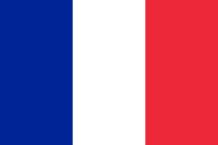ST BARTHÉLEMY
 Saint Barthélemy land’s area is about 21 sq km. It is, morever, the smallest French collectivity in the West Indies. St Barth is surrounded with several rocky islets ; the largest, Île Fourchue, is a volcanic crater.
Saint Barthélemy land’s area is about 21 sq km. It is, morever, the smallest French collectivity in the West Indies. St Barth is surrounded with several rocky islets ; the largest, Île Fourchue, is a volcanic crater.
Its landscape is mountainous, its very dry vegetation is comprised of cacti, bougainvilleas, for example.
The worldlife consists of no-venomous and harmless snakes, lizards, iguanas, frigates, turtles… The highest peak is Morne du Vitet (286m).
The main economic activity is tourism but fishing, a traditional sector, has not disappeared. Before European colonization, the Caribs practised fishing there but the absence of drinking water did not encourage them to settle in the island for a long time.
Trade is also very important, St Barthélemy has a duty-free status.
This land was discovered in 1493 by Christopher Columbus during his second voyage in the New World. The seafarer named it after his older brother, Bartholomeo but the Carib Indians called it « Ouanalao » which would mean “pelican” or “iguana above”.
In 1648, French colonists who came from St Kitts settled in St Barthélemy. During five years (from 1651 to 1656), the island was run by the Knights of Malta. But, in 1656, the Carib Indians killed all the colony. In 1673, French Protestants (Huguenots) decided to colonize the island which was deserted by the Europeans, for several years. St Barthélemy became quickly a prosperous base for the French pirates who pillaged the Spanish galleons.
The lack of big plantations did not require many African slaves.
In 1784, French King Louis XVI gave in St Barthélemy to Swedish King Gustave III. In return, France was authorized to trade in Gôteburg’s port. In times past called Carénage, St Barthélemy’s port was named Gustavia by the Swedish towards 1787 ; they built the town hall and three little forts : Gustave, Octave and Karl. In order to get rich, Sweden gave the duty-free-status to the island in 1785 and continued the slavery of Africans ; slavery was abolished officially on October 9, 1847.
In 1852, a large part of Gustavia was violently destroyed by fire. In 1876, because of budget reasons, Sweden gave back St Barthélemy to France in exchange for 320 000 francs.
In 1946, St Barthélemy had become a town of Guadeloupe. After a referendum on December 7, 2003, the island became a French overseas collectivity on July 15, 2007. An elected president and an elected assembly lead the island which also has representatives (deputy and senator) in French Parliament. A prefect represents France in the island. St Barthélemy’s inhabitants are French citizens.
Area : 21 sq km (8 sq miles)
Population : 9 100 inhabitants
Capital : Gustavia
Language : French – Patois – Creole
Currency: Euro (€)
People : St Barth (French citizens)
